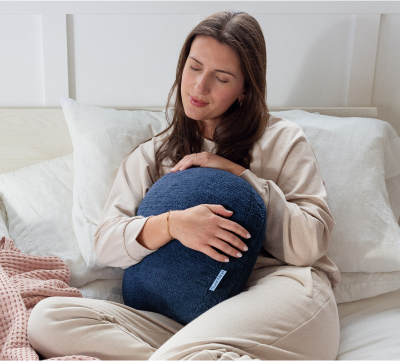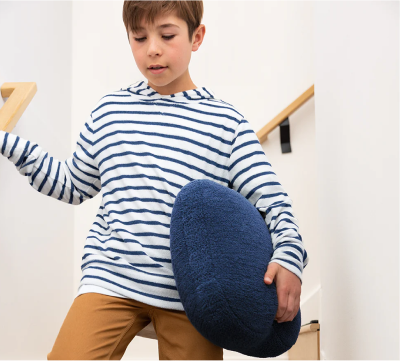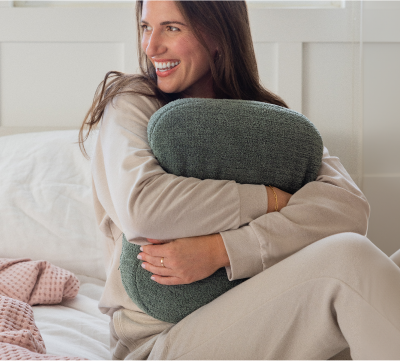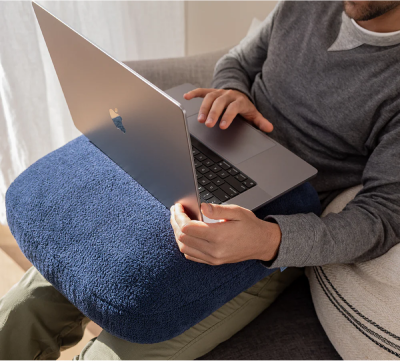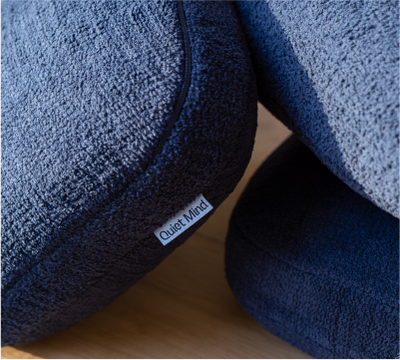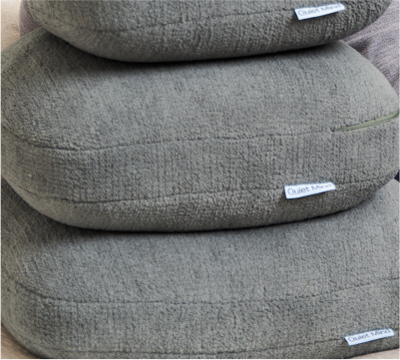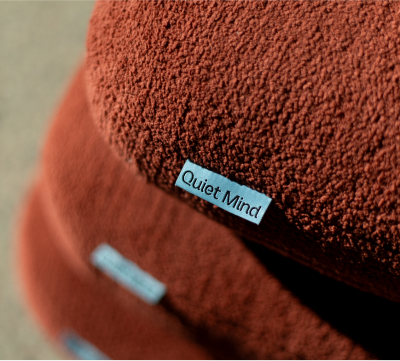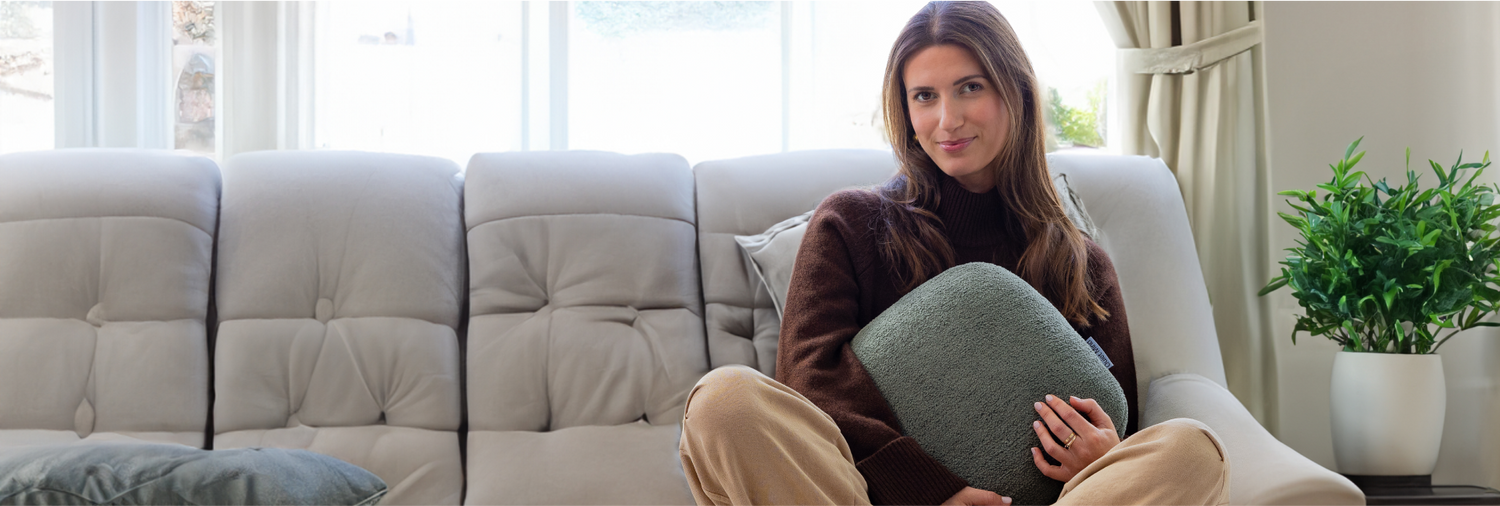Shaking can arrive without warning. A tremor in your hands. Unsteady knees. A voice that won’t hold still. In moments of heightened anxiety, your body speaks for you, before your mind can process what’s happening.
This physical response can feel frightening or confusing. But it’s also a natural and reversible part of the stress response. If you’ve ever experienced shaking or trembling from anxiety, know this: you are not alone, and your body is not broken.
In this guide, we’ll explore why anxiety disorders cause shaking, what the symptoms feel like, and gentle yet effective ways to support your nervous system back into a state of calm.
Is It Normal to Shake During an Anxiety Attack?
Yes. Shaking is a common physical reaction to experiencing anxiety. It’s not a sign of failure; it’s a sign that your nervous system is doing what it was designed to do in a moment of perceived threat.
How Common Is Anxiety-Induced Trembling?
Many people living with an anxiety disorder experience shaking or trembling, especially during intense emotional moments. These tremors can result from social anxiety, generalized anxiety disorder (GAD), panic attacks, or stress-related overwhelm.
When the nervous system detects danger, real or perceived, it activates a fight-or-flight response. Adrenaline floods the body. Muscles tense. Heart rate and blood pressure rise. In the absence of physical action, that built-up energy can release as tremors.
When Shaking Is a Cause for Concern
While anxiety-related shaking is usually temporary and not dangerous, there are times when it may signal a separate health condition. It’s wise to seek medical advice if:
- Shaking persists long after the stressor has passed.
- It interferes with your daily functioning.
- It’s accompanied by unusual symptoms like weakness, confusion, or fainting.
A qualified provider can help rule out other conditions and guide you toward relief.
Why Anxiety Causes Shaking and Trembling
To understand why you shake during anxiety, it helps to understand how deeply the body and mind are connected.
The Fight-or-Flight Response Explained
When the brain perceives a threat, it signals the body to prepare. This is known as the sympathetic nervous system response. Hormones like cortisol and adrenaline surge through your bloodstream, preparing your body to either flee or fight.
Muscles become alert. Blood flow increases. Breathing becomes shallow. All of this can cause shaking or trembling, especially in the hands, legs, or voice.
These symptoms of anxiety are not a malfunction. They are your body’s way of preparing you to act. When the energy has nowhere to go, because the threat is emotional or abstract, the tension often escapes through tremors.
How Adrenaline Triggers Physical Symptoms
Adrenaline heightens awareness and increases blood sugar to fuel large muscles. This intense activation can leave you feeling shaky, jittery, or like your body is vibrating from the inside.
The good news? When you recognize that this is part of your anxiety disorder, it becomes easier to meet it with understanding rather than fear.
Can You Have Shaking Without Feeling Anxious?
Yes. You can experience anxiety in your body even when you’re not fully aware of it in your mind.
Subtle Signs of Anxiety You Might Miss
Not all anxiety announces itself with panic. For many, it arrives quietly; through tension, restlessness, or disrupted sleep.
You may notice:
- A persistent tightness in your jaw or shoulders.
- Feeling “wired” but tired.
- Trouble focusing or feeling present.
- Digestive upset or nausea.
- Waking up feeling unrested, even after sleep.
These signs can indicate generalized anxiety disorder or chronic stress. Over time, this state of low-level hyperarousal can lead to shaking or trembling, even in seemingly calm situations.
How the Body Stores Stress Even Without Active Worry
When your nervous system doesn’t get a chance to fully return to calm, it carries residual tension. This built-up charge can make you more sensitive to stimulation, stress, or even small triggers.
In this state, mindfulness techniques, gentle movement, and breathwork become powerful tools, not just for managing or soothing anxiety, but for preventing the body from reaching a tipping point.
What Anxiety Shaking Feels Like
Anxiety-related shaking varies from person to person. For some, it’s subtle, like a flutter inside the chest. For others, it’s visible trembling in the hands or voice.
Common Signs and Areas Affected
|
Area |
Symptoms |
Impact |
|
Hands |
Trembling, clumsiness |
Difficulty holding objects or writing |
|
Legs |
Shakiness, instability |
Trouble walking, standing, or feeling steady |
|
Voice |
Quivering, tension |
Hesitancy speaking, embarrassment |
|
Chest |
Internal vibration, heart fluttering |
Feeling “out of body” or on edge |
Some people also describe internal tremors, a buzzing or vibrating sensation that’s not visible but deeply felt.
How Long Does Anxiety Shaking Last?
The duration of anxiety-induced shaking can vary widely. For some, it may last only a few minutes after a triggering event. For others, especially those with generalized anxiety disorder, the tremors may linger, returning in waves until the nervous system fully resets.
Factors that affect duration include:
- Your current stress level.
- Whether you’ve used any grounding or mindfulness techniques.
- How long your nervous system has been in a state of activation.
- Your sensitivity to internal sensations.
The important truth? Your body wants to find balance, and with the right support, it will.
Immediate Ways to Stop Anxiety Shakes
Shaking from anxiety isn’t always within your control, but you can support your body with techniques that relieve the anxiety fast and promote a sense of grounded safety.
Deep Breathing, Box Breathing, and Grounding Exercises
These exercises help redirect your attention, regulate breathing, and invite the body to feel secure again.
-
Deep Breathing: Deep breathing is one of the most accessible ways to calm the body's fight-or-flight response. By slowing your breath, you signal to the brain that you are not in immediate danger.
Try This: Inhale slowly through your nose for a count of four. Let your belly expand gently with the breath. Exhale softly through your mouth, releasing tension as you go. Repeat this for two to three minutes, and focus on the rhythm of your breath. The goal is not perfection, but to create space between your anxious thoughts and your body's reactions. -
Box Breathing: Box breathing adds structure to your breathwork and helps regulate arousal in a steady, predictable pattern. This technique is widely used in mindfulness practices and even by athletes and first responders to maintain calm under pressure.
Try This: Inhale for a count of 4, hold the breath for 4, exhale for 4, and hold again for 4 before beginning the next round. Visualizing a square as you breathe—each side representing a phase—can add a layer of mental focus that grounds your attention. -
Grounding Exercises: Grounding helps anchor your awareness in the present, which is especially powerful when anxiety makes you feel disconnected or overwhelmed.
Try this: One popular technique is the 5-4-3-2-1 method. Name 5 things you can see, 4 you can touch, 3 you can hear, 2 you can smell, and 1 you can taste. This process engages all your senses, reminding your brain that you are physically here and safe.
Another useful tool is the 3-3-3 method, which is a quick mental reset. Look around and name 3 things you see, then 3 sounds you hear, and finally, move 3 parts of your body (such as your shoulders, fingers, and ankles).
This method brings you back into your body and into the now, away from spiraling anxious thoughts.
Progressive Muscle Relaxation and Cold Exposure
Sometimes anxiety causes not just shaking, but full-body tension. These approaches help discharge that excess energy.
- Progressive Muscle Relaxation (PMR): Starting at your feet, gently tense each muscle group for 5 seconds, then release. Move slowly up the body. This teaches the nervous system to recognize and release tension.
- Cold Exposure: Splash your face with cold water or hold an ice cube in your hand. The sudden temperature shift can activate the parasympathetic system, also known as "rest and digest," and help ease trembling.
Lifestyle Changes to Reduce Anxiety-Induced Shaking
Your daily rhythms shape your nervous system. These gentle adjustments create long-term resilience.
Sleep, Nutrition, and Caffeine Intake
- Prioritize Restorative Sleep: Aim for 7–9 hours of quality rest. Poor sleep can worsen the symptoms of anxiety, including tremors. Try a bedtime wind-down routine and reduce screen exposure an hour before bed.
- Nourish Steadily: Eat regular, balanced meals that stabilize blood sugar. Avoid excessive sugar or processed foods that may increase agitation. Nutritional deficiencies can cause anxiety or make it worse, particularly when key nutrients like magnesium, B vitamins, or iron are lacking.
- Limit Caffeine: High caffeine intake is a known trigger for shaking or trembling, especially for people with anxiety disorders. Consider switching to herbal tea or decaf options.
Regular Physical Activity and Relaxation Routines
Movement helps release stress hormones like adrenaline and fosters a more balanced nervous system.
|
Practice |
Benefit |
|
Gentle walking or yoga |
Regulates mood and energy levels |
|
Tai chi or qi gong |
Promotes mindfulness and body awareness |
|
Evening wind-down ritual |
Signals safety and prepares for restful sleep |
Long-Term Strategies for Managing Anxiety Tremors
Immediate relief is essential, but long-term healing comes from tending to both body and mind, especially with support.
Cognitive Behavioral Therapy and Exposure Techniques
Cognitive Behavioral Therapy (CBT) is one of the most effective therapies for anxiety disorders. It helps you:
- Identify unhelpful thought patterns that trigger the fight-or-flight response.
- Replace catastrophic thinking with balanced, realistic perspectives.
- Practice gradual exposure to triggers to reduce fear responses over time.
This structured approach empowers you to build confidence in your body and mind.
Medication Options for Severe Anxiety Symptoms
Some people may benefit from medical support, especially if shaking or trembling is intense or interfering with daily life.
Common medications for anxiety include:
- Selective serotonin reuptake inhibitors (SSRIs): Often prescribed for generalized anxiety disorder or social anxiety, SSRIs help regulate serotonin levels and reduce baseline anxiety.
- Beta-blockers: May reduce physical symptoms like shaking in performance or high-stress situations.
- Short-term anxiolytics: Used occasionally for acute anxiety episodes, under close supervision.
Discuss any medication options with a licensed provider to find what works best for your needs.
Using Breath Training to Reduce Physical Tremors Over Time
When practiced regularly, breath control techniques can calm the autonomic nervous system and reduce the physical expression of anxiety, including shaking or trembling.
- Diaphragmatic breathing helps shift your body out of fight-or-flight by stimulating the vagus nerve.
- Box breathing (4-4-4-4) slows down physiological arousal, especially helpful during anticipatory anxiety.
- Extended exhale techniques (e.g., inhale for 4, exhale for 6–8) have been shown to reduce sympathetic nervous system activation.
- Practicing breathwork for 5–10 minutes daily builds nervous system flexibility and resilience over time.
- Over weeks or months, breath training can weaken the link between anxiety and motor symptoms like tremors.
Using CBT to Break the “Tremor-Worry-Tremor” Loop
The fear of trembling often causes more trembling. CBT helps stop this loop by changing the way you think about physical symptoms.
- Identify automatic thoughts like “People will notice I’m shaking” or “This means I’m weak.”
- Replace them with more balanced alternatives: “My body is reacting, but I’m still safe.”
- Use thought logs to challenge worst-case scenarios with evidence.
- Practice cognitive diffusion; observing your thoughts without buying into them.
- Combine CBT with behavioral experiments where you intentionally allow mild shaking and observe that the feared consequence (e.g., judgment, collapse) often doesn’t happen.
Desensitizing Your Body to Triggering Situations Through Gradual Exposure
Anxiety tremors often appear during specific events like social interaction, driving, or public speaking. Gradual exposure retrains your body to remain grounded even when challenged.
- Start with low-intensity exposure scenarios (e.g., small groups, familiar environments).
- Visualize the anxiety-inducing event while practicing calming tools like breathwork.
- Gradually increase exposure intensity e.g., go from speaking in front of a mirror to a friend, then a group.
- Track your progress in a journal: tremor intensity, perceived control, emotional state.
- Pair exposure with positive reinforcement or soothing actions to build safety associations.
You don’t need to be in crisis to seek help. You only need to be ready for change.
When to Seek Help for Shaking from Anxiety
Listen to your body. If the shakes feel disruptive or distressing, you deserve support.
Distinguishing Anxiety Shakes from Medical Conditions
Shaking may also be caused by:
- Neurological conditions (e.g., Parkinson’s)
- Endocrine disorders (e.g., hyperthyroidism)
- Medication side effects
If you’re unsure, it’s wise to consult a doctor.
Talking to a Mental Health Professional
A trained professional can:
- Offer clarity about what you’re experiencing
- Teach nervous system regulation strategies
- Guide you toward steadier ground
You don’t have to navigate anxiety alone.
What to Expect During a Mental Health Evaluation
A therapist or psychiatrist may:
- Explore your medical and emotional history.
- Assess current symptoms and triggers.
- Develop a treatment plan, which may include therapy, medication, or both.
You don’t need to be in crisis to seek help. You only need to be ready for change.
Final Thoughts on Calming Shaking from Anxiety
Shaking is not a failure, it’s communication.
Your body is asking for safety, connection, and space to reset. And there are many ways to respond gently, with compassion and steadiness.
With each breath, each grounding touch, and each quiet moment of care, you help your nervous system learn a new rhythm, one where you don’t just survive anxiety, but move through it with growing ease.
You are not broken. You are human, in motion toward healing.
About Quiet Mind
At Quiet Mind, we understand that calming anxiety starts with reconnecting to the body’s natural rhythms. Sometimes, that begins with a breath, or a sip of water.
Our tools are designed to support these simple, sensory moments that help you return to yourself.
Our signature weighted pillows offer gentle, grounding pressure that complements practices like hydration, mindful breathing, and nervous system rest. Whether you're navigating daily stress or easing into sleep, Quiet Mind invites you to slow down, soften your focus, and find steadiness within.
Because relief doesn't have to be loud or complicated. Sometimes, it's just quiet enough to listen to what your body needs.
Frequently Asked Questions
What is anxiety-induced shaking, and is it normal?
Yes. It’s a common response to stress and typically temporary.
Why does anxiety cause shaking and trembling?
The fight-or-flight response releases adrenaline, which activates the muscles and nervous system.
Can you experience shaking without feeling anxious?
Yes. Subtle or stored stress can cause physical symptoms even when you’re not consciously anxious.
How can I stop shaking from anxiety immediately?
Deep breathing, grounding, progressive muscle relaxation, and cold exposure can help calm your body.
What lifestyle changes help reduce anxiety-induced shaking?
Prioritize sleep, reduce caffeine, eat nourishing foods, and incorporate gentle daily movement to reduce any anxiety-induced shaking.
How can I tell if shaking is from anxiety or a medical issue?
If unsure whether shaking is from anxiety, consult a medical professional to rule out causes and gain peace of mind.
